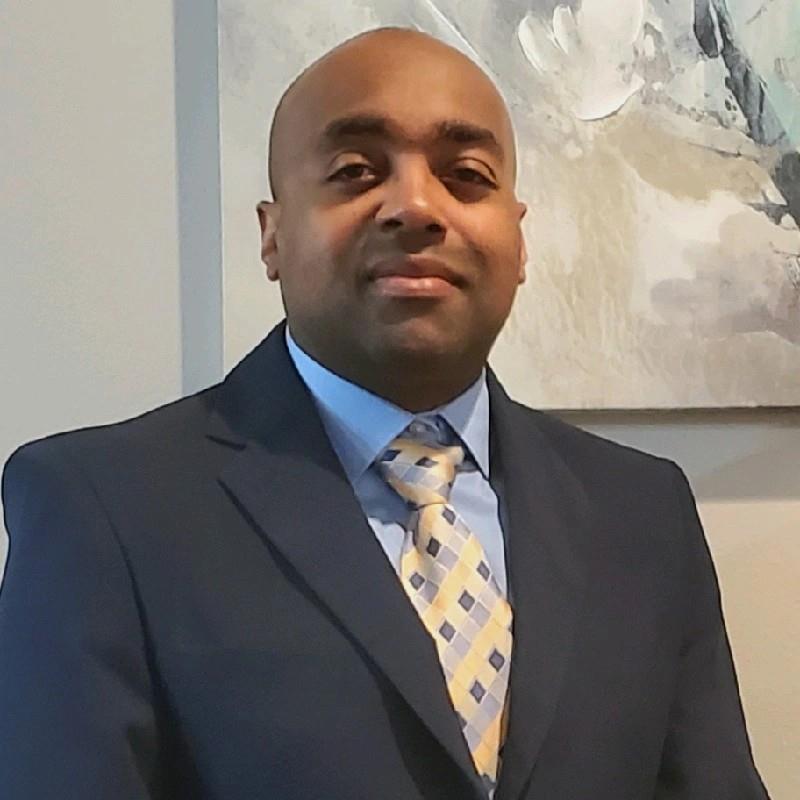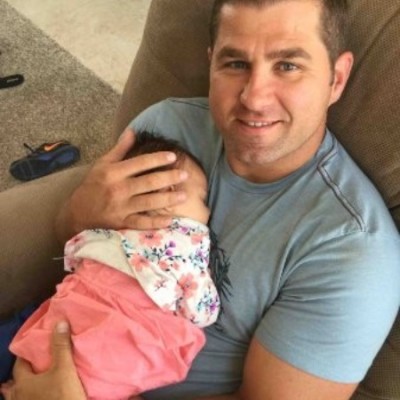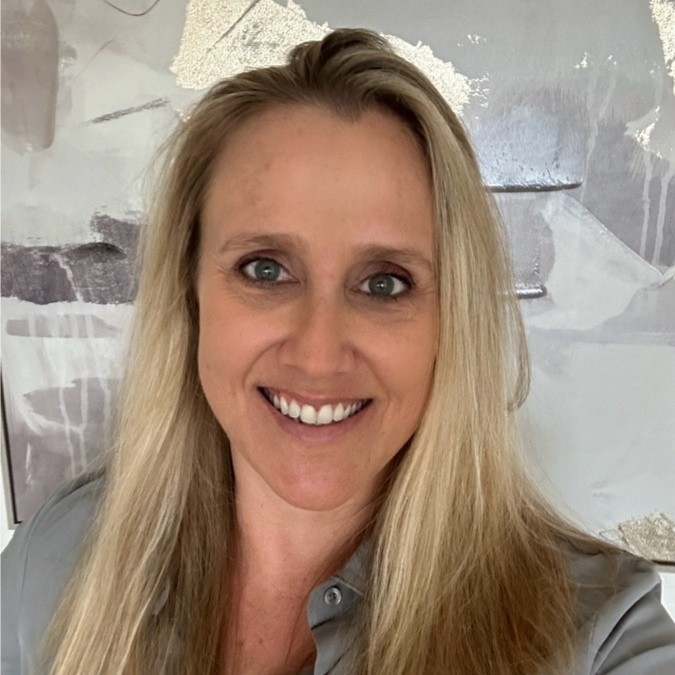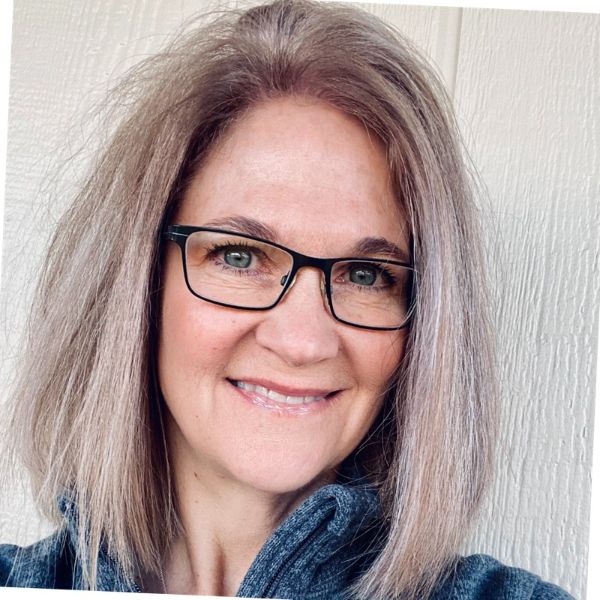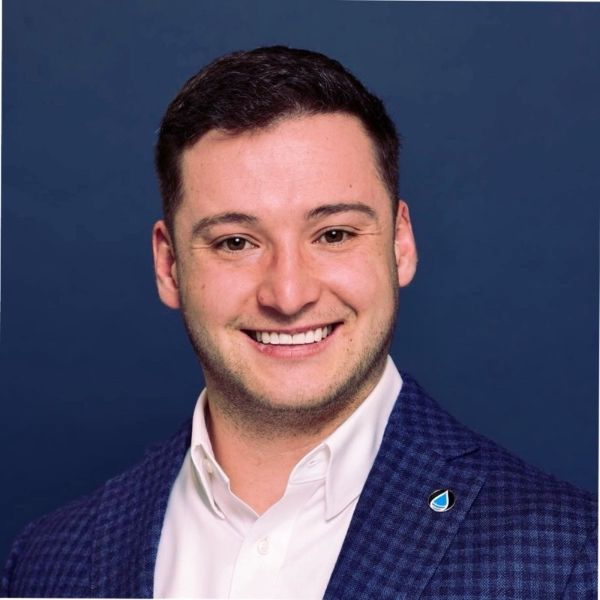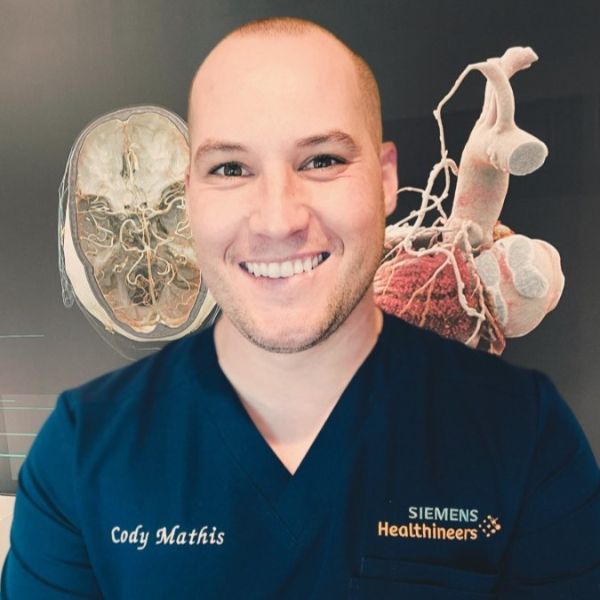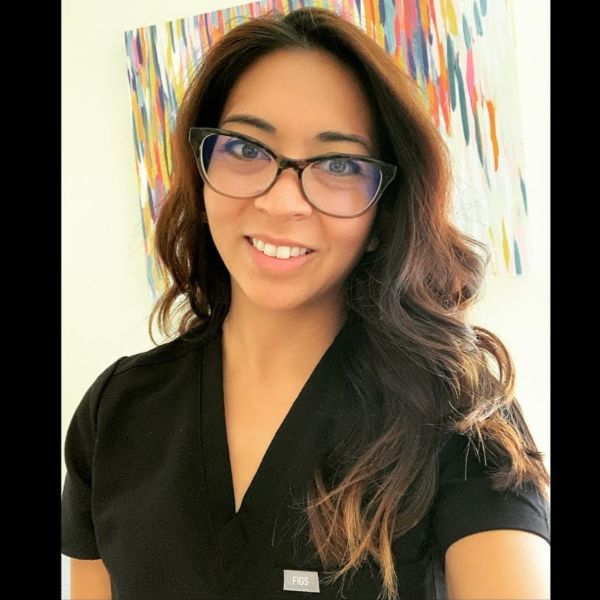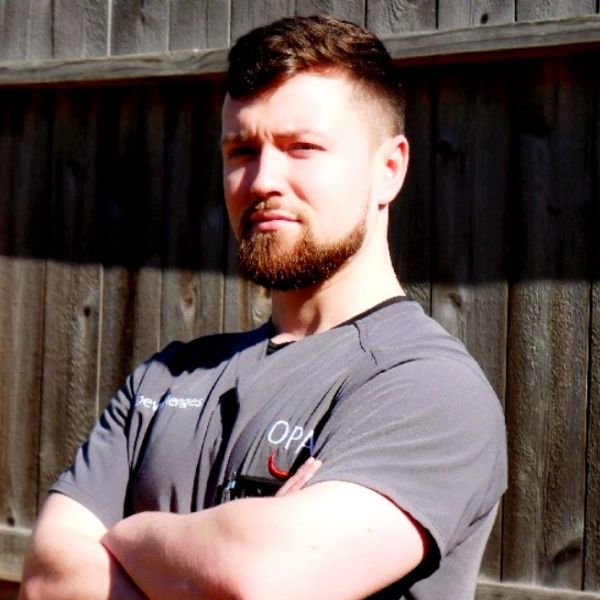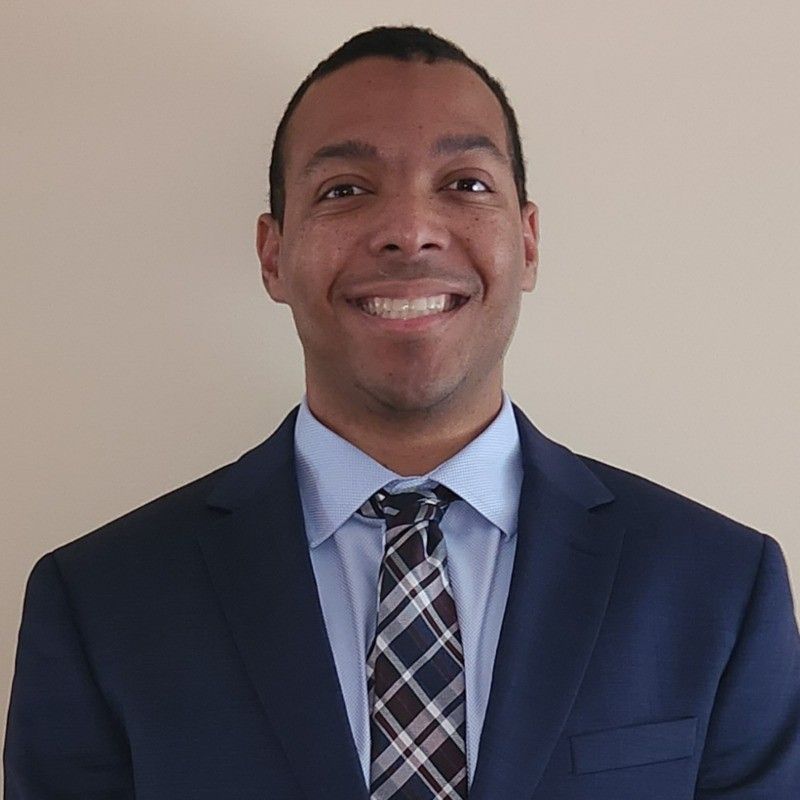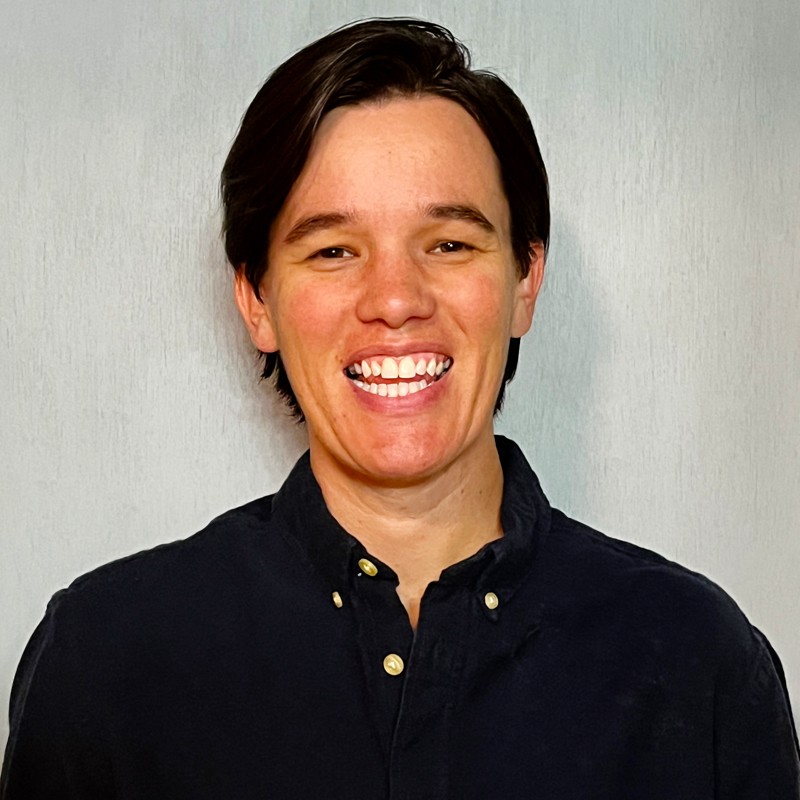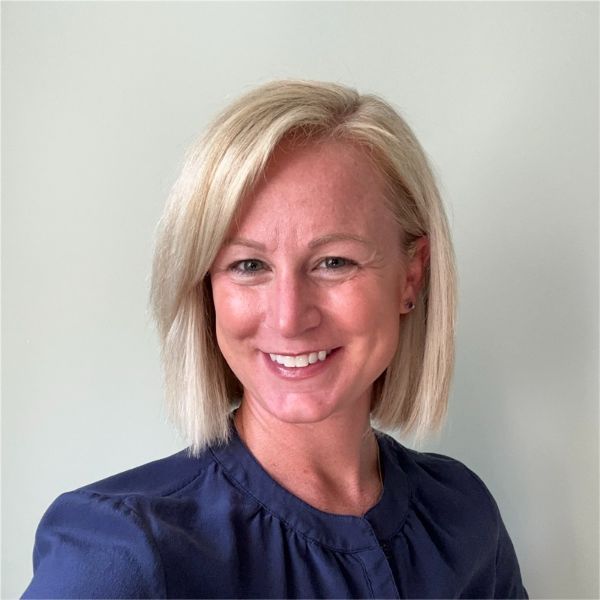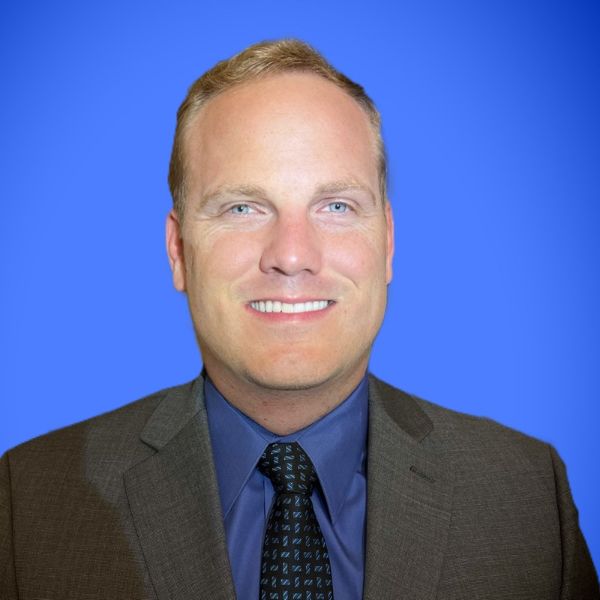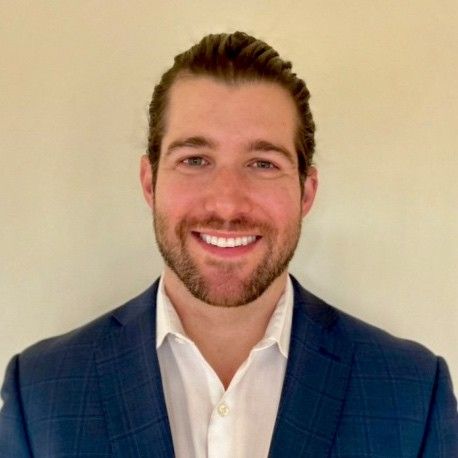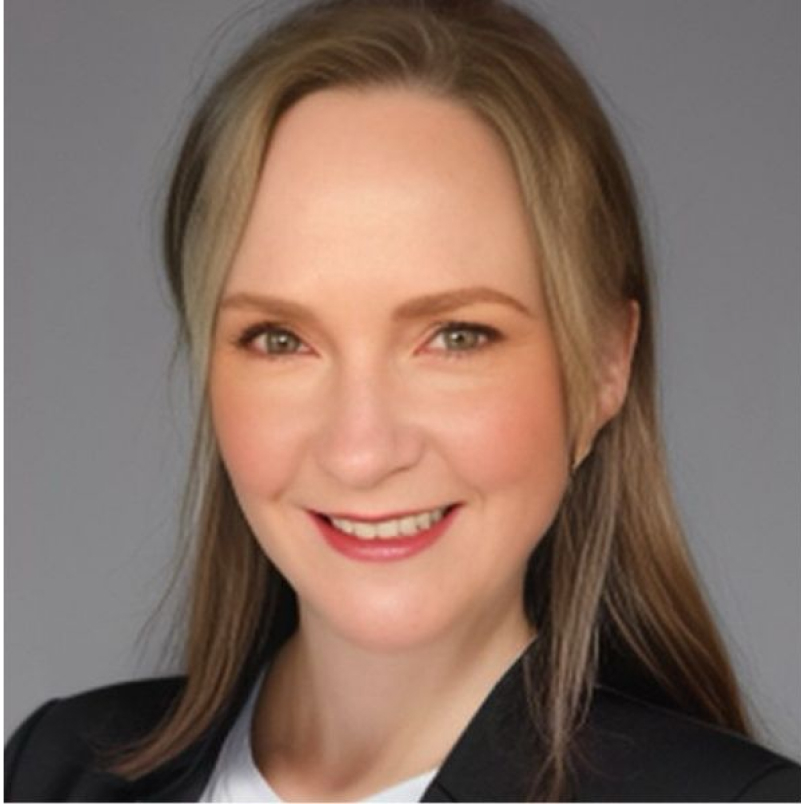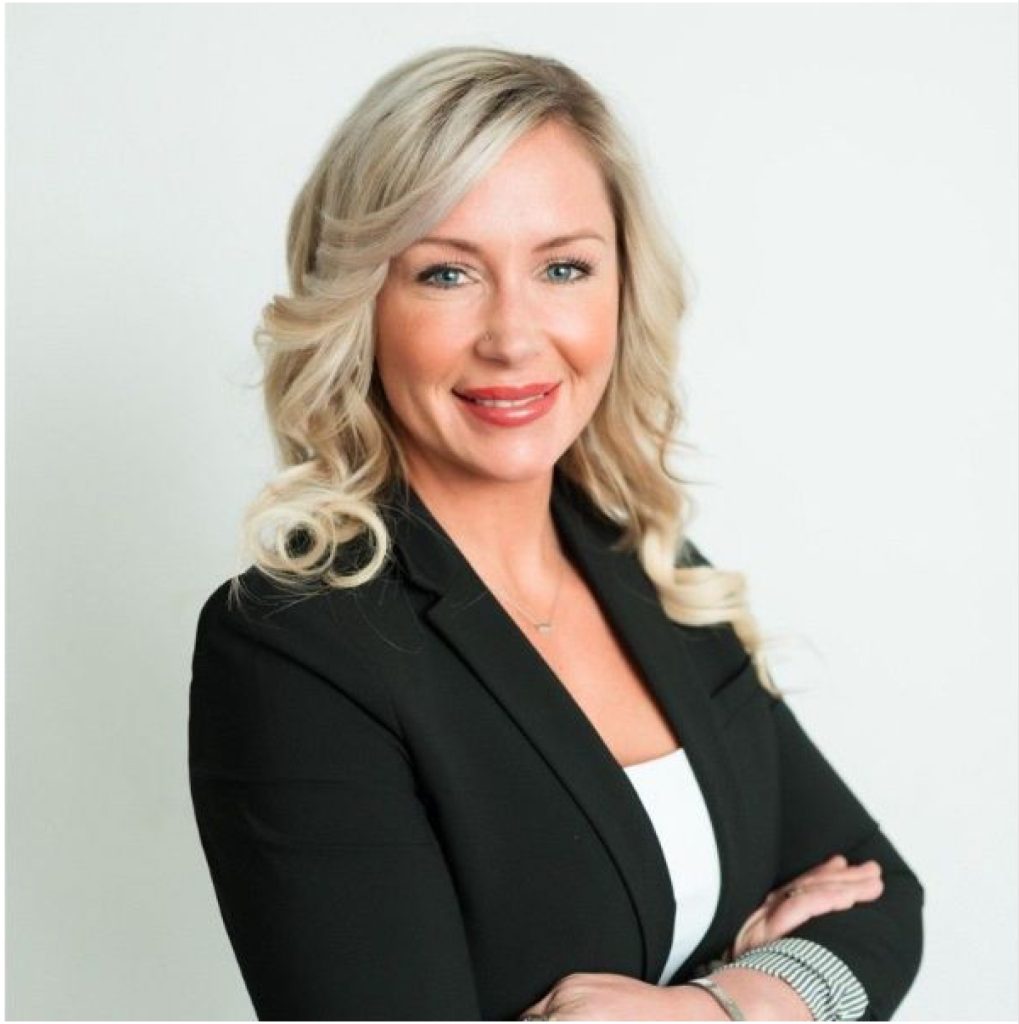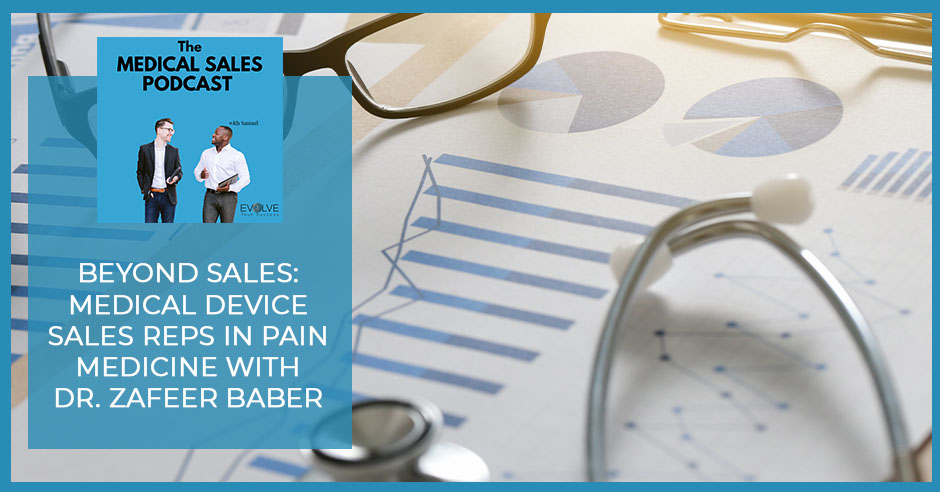
Just how important are medical device sales reps for physicians? Far from just representing the companies that hire them, these sales reps can really be an important factor in ensuring the smooth flow of medical procedures. Take it from a physician’s point of view as anesthesiologist and pain intervention specialist Dr. Zafeer Baber joins Samuel Gbadebo on the show. In his job, medical device sales reps do more than just sales; they show up during surgery and even during trial observation periods. Whether you’re a medical device sales rep or trying to be one, you will learn so much about how you can deliver more value to your clients.
—
Listen to the podcast here
Beyond Sales: Medical Device Sales Reps In Pain Medicine With Dr. Zafeer Baber
I’m proud to bring you a guest that’s a physician. He’s an interventional pain management physician and he deals a lot in spinal cord stimulators. He’s dealing a lot with manufacturers and medical device sales reps. The reason why I believe this talk is so valuable is because he sheds light on how important the medical device sales rep is. In this show, we talk about everything from medical device sales, pharmaceutical sales, to anything related to medical sales. What I love about this talk is how he hones in on the value, the importance of a medical device sales rep, and how they play a major factor in how well and how smoothly his procedures go.
We talk a little bit about the environment that we’re dealing in these quarantine times with COVID and the pandemic, how we’re having to navigate around still getting things done. We talk about what the future might look like, especially when it comes to physicians like him interacting with medical device sales reps. Enjoy this conversation, pay attention to everything that he shares because it gives him insight into how to always bring value whether you’re trying to get into medical device sales rep space, or you are a medical device sales rep. It’s always nice to hear some insight into how you can continue to deliver more value and be that much more effective. Thank you again for reading and enjoy the interview.
—-
Dr. Baber, how are you? Thank you for joining us.
Samuel, it’s good to be here. Thanks for having me.
We’re with Dr. Baber. He is a pain intervention specialist and he’s coming from a hospital out there in Boston. Dr. Baber, why don’t you tell us a little bit about yourself?
I’m an anesthesiologist by training. I did a four-year residency in anesthesiology. After that, you could subspecialize in many different aspects of anesthesiology. One of those sub-specializations is pain medicine. I did a one year of pain fellowship after my anesthesiology residency. Now I specialize in pain.
Tell us a little bit about where you’re from. Are you originally from the East Coast, West Coast?
I’m from the Midwest. I’m from Minnesota. I grew up in the suburbs of Minneapolis and St. Paul. I went to high school in St. Paul. My parents still live in Minneapolis. After I graduated high school, I went to New York City and I got an Engineering degree in Biomedical from Columbia University. I continued my education in Chicago and went to Chicago Medical School. After that, I went back to New York City and did my residency in anesthesiology at Columbia University Medical Center. I did my fellowship training at Johns Hopkins Hospital in pain management, and then I moved to Boston, which is where I am residing now and practicing in the Boston area.

Coming from the Midwest, how do you like living in Boston?
It’s very different. A lot more lobster rolls than the Midwest. There’s a lot of differences between the Midwest and the East Coast. I’ve spent so much time on the East Coast that I’m used to the East Coast. I love the Midwest, but even in different regions of the East Coast. Boston is different than Baltimore, which is different than New York City. They each have their own culture and their pluses and minuses, but I’m happy to be residing in Boston.
You have an engineering background, but it’s biomedical engineering. Was being a physician always the plan or did you have something different in mind?
Being a physician was a backup plan. While in college, I was a Biomedical Engineering major and I joined an organization called Engineers Without Borders. What we did in that organization is we designed and built a clinic in rural Thailand. We spent the school year designing this clinic. We did some fundraising. We flew off to Thailand and built this clinic. I started to see how healthcare has played such a major role in improving the quality of life in people throughout the world. I got tired of engineering. I decided that I didn’t want to spend my life in front of a computer, and then I became a doctor. Lo and behold, I spent my life in front of a computer. There’s no way to avoid computers, but I’m still happy with the decision.
Talk to us a little bit about your specialty. In your own words, what makes your specialty unique?
Pain is something that affects everybody’s life sometime in their life. When I was in medical school, I injured my knee, a torn meniscus and I had meniscal surgery. For people who don’t know, the meniscus is the cushion in the knee. What happens is if that tears or that wears down over the course of time, you can get joint pain because you have bone-on-bone pain. Before that, I was an active person. I ran a lot. I played a lot of sports, and I had this injury where I was no longer able to do that. It was significantly affecting my happiness and my quality of life. I started to have greater empathy for people dealing with chronic pain. I went into anesthesiology, where we deal with pain all the time because we deal with surgery and surgeries are painful. I decided that that’s how I wanted to dedicate my life, treating people in pain. I decided that my subspecialty would be pain medicine and the rest is history.
I have such an experience with that. I had three patellar tendon ruptures. Only two knees between O1 and O9.
Unfortunately, young people like you frequently get these injuries being active, like playing a sport. Your sport was basketball and then you get these injuries. I joke with my patients, “You should be healthy and not exercise because everybody who exercises gets an injury.” That’s a joke. You should exercise because it’s good for you. Young people like to be active, we get some injury, and then all of a sudden, this acute event changes everything and you can no longer live the life that you’ve been living for the past 20 or 30 years before.
[bctt tweet=”You can tell the difference between a medical device sales rep who cares about the patient versus someone who is just trying to make a sale.” via=”no”]
That’s exactly what happens. Do you deal with pharmaceutical manufacturers?
Especially in the field of pain medicine, there are a lot of manufacturers that we deal with because a lot of the things that we do deal with the spinal cord stimulators, intrathecal baclofen pumps, and these are all made by device companies. When you deal with device companies, you deal with device reps. I started working with a lot of medical device companies starting from my fellowship year in pain medicine. The reason for that is because, as pain medicine doctors, we implant spinal cord stimulators and baclofen pumps. That requires a device representative to be onsite during the procedure.
For example, when we do a spinal cord stimulator, the first thing you do as a trial. Let’s say a person has back pain or leg pain, and the decision is made to proceed with a spinal cord stimulator trial. The representative comes in, we do the trial, the patient has the spinal cord stimulator trial for five or a week, I maintain close communication with the device representative throughout that time. After that, we decide whether to proceed with the permanent implant. The permanent implantation is also a surgery that involves the device representative. A big part of what we do is working with these device representatives. They play a major role in the practice of pain medicine.
When it comes to working closely with these device representatives, what do you like best in your advice representatives? What do you like to see? What do you appreciate? What helps you feel comfortable and confident to do the procedures you do when they’re involved?
The first thing I like to see in my device representative is the one who cares about the patient. You can tell the difference between a device representative that is looking out for the patient that cares about his or her patient versus somebody that is trying to make a sale. What I mean by that is when a device representative cares about the patient, they see the entire patient through the spinal cord stimulator implantation, for example. Even after the implantation, they work with the patient to get the optimum settings of the spinal cord stimulator and things like that. Other things that I would appreciate in a device representative is one that is accessible.
A lot of my good reps, what they do is during the trial, they call the patient every day, they have a conversation with them, and then they will call or text me to give me a daily update during the trial. If they express any concerns that they have for the patient or any concerns that the patient has, they’re the quarterback a lot of times during these trials. We maintain close conversations with the representative as well as the patient. The three of us develop a relationship during this time that allows things to flourish.
We talk a lot about relationships and the importance of developing strong relationships, as you said, you can trust, feel comfortable, and do everything you need to do regarding the procedures. What would you say are the best things you’ve seen done by reps that are trying to establish a new relationship with you?
Not every representative would feel comfortable with this but they’ve said, “If a patient has questions, why don’t you give the patient my phone number and we can talk.” A lot of times, the patient and the device representative developed this relationship with each other long before the actual procedure and the spinal cord stimulator trial. The day of the procedure is not the day where the device representative comes and says, “I’m so-and-so.” On the day of the procedure, when the actual day comes, the representative isn’t introducing themselves because the patient already knows who the spinal cord stimulator representative is.

Even as a fellow, we were dependent on our device representatives. A lot of times, we had a conversation before the trial saying, “Let’s try to enter here and have the device at this level of the patient’s spine,” and we go from there. The device representative sees these procedures every single day. Especially when I was a new fellow doing this for the first, second, or third time, there was an attending physician in the room but there was also a device representative who’s seen thousands of these procedures done before I even was a resident. I relied on both my attending and the device representative for input and feedback.
There is so much value of the great service they’re providing. Walk me through this process. You’re doing your thing, you’re seeing your patients, a brand new device rep you’ve never seen or heard before has a brand new novel device they want you to start using. Walk me through from your side, what typically happens from them walking into your office all the way down to now you’re working with them in a procedure.
Let’s focus on the spinal cord stimulators for this conversation. There are many companies. They all have something different to offer. For example, one company may say. “We’re good for back pain even after a patient has had back surgery.” Another company might say, “We’re good with back and leg pain.” A third company may say. “We’re MRI compatible.” That’s the big deal especially for patients who have multiple sclerosis who may require multiple MRIs throughout their life. Every device has their pluses and minuses. This spinal cord stimulation is an ever-evolving technology. Even since I was a fellow in 2015, the technology has changed completely in these past years with spinal cord stimulation.
New devices come out and batteries get smaller because you also have to implant the battery under the skin. New technologies emerge in terms of MRI compatibility, something we call paresthesia wherein some of the old spinal cord stimulators, you would feel a sensation in your leg. That has changed where you don’t necessarily would have to feel that sensation in your leg, feet, or wherever your pain is in order to get pain relief. With these ever-emerging technologies, sometimes the representative would say, “There’s this new study out, you should read up on this new study. We are doing a study in that, complex regional pain syndrome, or failed back surgery syndrome. You might want to look at how technology has changed from even a year ago.”
In general, you’re open to new reps and whatever information they’re bringing.
I’m open to new reps and whatever information they’re bringing because the technology is changing all the time. The technology years ago isn’t the technology today. Look at cars, in 2015, you were to tell me that people are developing cars that are driving themselves.
We’d say, “No, that’s not going to happen for another twenty years.”
It’s becoming more common now that these cars are being developed with auto-drive technology. That’s similar with spinal cord stimulation. There’s a lot of competition, things changing, and I try to keep an open mind. I don’t take any money from these companies. I have no conflicts of interest. There are representatives I like, and there are companies I like for different circumstances. With that being said, a good rep always supersedes a good device because if I have a good device with a rep that I don’t work well with, it’s useless. If I have a great rep with a device that may not be considered objectively better than another device, I would take that great rep any single day. I know I can rely on that rep to maintain good communication with the patient, with me, and to care about the patient even after the sale is made and the device is implanted. I value that much more than I would value a new device where the battery might last one extra year or one centimeter thinner than the other device.
[bctt tweet=”A good rep always supersedes a good device. A good device with a rep that is not a good fit is useless.” via=”no”]
That brings me to my next point. I know that in training, especially when you were a fellow and even before then, you saw certain companies more often than others. With that being said, you definitely champion the relationship of the representative that’s bringing whatever device. Is it an even playing field for you or do you typically give the benefit of the doubt to certain larger companies?
I wouldn’t say the size of the company matters. What I will say is this, and this isn’t just with me, it’s basically with any fellow. The device that the fellow becomes most comfortable with as in training is the device that they’re more likely to use coming out of training. I don’t know if I can mention companies, but let’s say, I did way more Medtronic trials are implantations as a fellow. Coming out of fellowship, doing my first implantation or trial, I would be more likely to do Medtronic because you want to maintain continuity from your training into being an attending. Let’s say, I move and I had a great rapport with the Medtronic rep in my training, but my rapport with the Medtronic rep in my new city isn’t as strong. There is an opportunity to form a strong relationship with company B, then there may be a shift in the device or the company used as an attending. Relationships here are a strong part of what device an attending physician may choose to go in.
It sounds even critical. If the relationship itself can open up an entirely new product with a new company, then the relationships are critical.
The size of the company doesn’t matter. When I was a fellow, there was a new emerging company coming out in the spinal cord stimulator world called Nevro. What Nevro did is they developed this new technology that the other companies didn’t have yet. It was called High-Frequency Stimulation, where you wouldn’t feel what we call paresthesias or sensation. For example, if you were having leg pain, the way that it used to be was that you would set your spinal cord stimulator up such that you would feel paresthesia or this abnormal sensation in your leg where the pain was. Even though the pain was better, you would have this abnormal sensation. This new company emerged on a scene where you wouldn’t have to feel that abnormal sensation anymore.
Since then, the other companies have caught up with that technology because it was a novel technology that people valued. Subsequently, you can start to develop this paresthesia free experience with other companies, but lots of new companies have come emerged with new technologies. A company is only good as its device representative for a physician. I love my reps in fellowship and I love my reps now, but what I am saying is even if you had this game-breaking technology with, if a new company came out and said we have this game-breaking technology that’s going to change the world, but I didn’t feel comfortable with the representative, the representative wasn’t accessible, or didn’t continue to maintain open conversations with me, I would still stay with the old company.
When it comes to deciding what devices and companies you want to go with, is it all you? Do you get a full reign on, “I met this rep, I love what they’re doing, we’re using it?” Do you have to get approval from a committee or talk to some people first? How does it typically work?
The physician ultimately decides the device that’s used on any patient. The physician can take into account many things and many factors when deciding what the device company to go with. Let’s say I had a patient with multiple sclerosis who I felt as if would benefit from a spinal cord stimulator. I would most likely choose the company that has full MRI compatibility with their device because I know that patient most likely need multiple MRIs throughout the course of their life. For example, a new company was to come out on the scene and you want to use that new company. You have to go through a process in order to get that device approved by the hospital. You have another device available. That’s a lot different than a private practice where the practice is yours so you can choose whatever device manufacturer you want. If you’re a hospital doctor versus a private practice doctor with your operating room, it’s a whole different process.
Let’s shift gears a little bit. What’s the best way that you’ve seen brand new reps who do not have a relationship with you get access to you to start one?
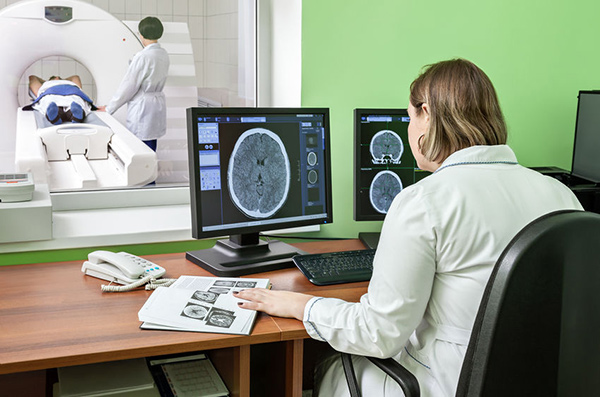
A lot of times, the representatives come and introduce themselves to me. When I move to a new city, every rep was a new rep and the way the reps are assigned geographically. You may have rep A in geographical location A, whereas you would have rep B in geographical location B. Sometimes, what happened was I told that my representative in Baltimore that I’m moving to Boston and the representative contacted their company’s representative for the Boston geographical location. That representative contacted me via phone or email saying, “My name is so-and-so. Let me know if you need anything.” Things like that.
Once you start doing these trials or implantations with the reps then you get to know them over time. What I will say though, in a city like Boston where there are many hospitals and practices, you would have multiple reps covering one geographical area because a rep can’t be both at hospital A and hospital B at the same time. If there’s a trial going on, you’ll need multiple representatives. You get to know multiple reps from a single company just because you’re in a busy metropolitan area with many practices. You’re going to have to know many people from any practice.
Dr. Baber, do you see whoever emails you? If they say, “I’m a new rep in the area. I’m from a smaller or newer company. We’re doing this. Let’s talk.” Are you open to this scene? Whoever says anything that piques your interest or that works a little differently?
What I would do is I would say, “I’m willing to hear you out. Why don’t we talk on the phone? I’m free from 12:00 to 1:00 because that’s the lunch hour. If you would like to have a conversation, I’m open to having a conversation at that time.” I’m willing to talk to whoever.
How would you say COVID has affected everything we’ve discussed from the way you meet reps to reps even getting in there? These are very important surgery. They’re implants. Talk to us a little bit about what COVID has done.
COVID has changed everything from the way that we see patients to the way we decide our medical plan going forward. This varies from state to state. For example, in the state of Massachusetts, when COVID is at its peak, we weren’t able to do elective cases. These are considered elective cases, even though it’s not elective for the patient. If a person is in debilitating pain and it’s affecting their ability to sleep, perform their activities of daily living, or work. To them, it’s not elective but the criteria that the state has is a lot different. When they consider a non-elective case, they’re saying a non-elective case is a case that a patient could die if they don’t get the surgery. Although it’s important for the patient in terms of the quality of their life because they’re not going to necessarily die if they don’t get the surgery, a lot of these have been delayed throughout the whole COVID pandemic. Hopefully, as the COVID numbers continue to decline and the number of elective procedures starts to gradually increase, we can start again to proceed with doing these cases.
A lot is being talked about reps working remotely to still guide physicians through procedures. Do you see that working in this space?
In the spinal cord stimulator world, probably not. I’ll tell you why. When we do the trial, the rep does things with the spinal cord stimulator to optimize the pain relief of the patient. The physician puts the lead into the epidural space of the spinal cord. What happens is the representative works his or her magic. They use a computer to interrogate the spinal cord stimulator. It works in a way that optimizes the pain relief for the patient. It’s not a cut and paste. The settings on a spinal cord stimulator for patient A are going to be completely different than the settings for a spinal cord stimulator in patient B. That’s for a couple of reasons. One is because everyone’s anatomy is different.
[bctt tweet=”From a physician’s point of view, a medical device company is only as good as its sales reps.” via=”no”]
The way anatomy in patient A is going to be a lot different than patient B. The second thing is everybody’s pain is different. The representative is a highly trained individual and a highly knowledgeable individual that knows how to change the settings of the spinal cord stimulator to optimize any individual’s pain and anatomy. In order to do that, they have to be on site. I don’t see that so much in the spinal cord stimulator field. With that being said, the representative can still call the patient during the trial phase and talk to them. That can be done remotely but if there are any changes that need to be done in the settings of the spinal cord stimulator, then the rep would have to come in and work with the patient individually.
Does it normally take between the patient learning they’re going to go through a certain procedure? I’m assuming you facilitate the relationship between the rep and the patient.
That’s depending on the patient and the rep. A lot of times, I say this device company is going to be used for this procedure. I facilitate an introduction between both the patient and the representative because they’re going to be working together throughout the course of the trial. The time between the decision to do the trial and the actual trial itself varies a lot. There’s a lot of factors that can be into play when we’re deciding to proceed with the trial. For example, is the patient anti-coagulated? If a patient has atrial fibrillation and they’re on Coumadin, you can’t decide to go right into a trial because you have to talk to the patient’s cardiologist about coming off of the Coumadin because you don’t want the patient to be on blood thinners during the course of the trial. That’s one factor.
Another factor is patient availability. Do they have somebody to drive them home? When is that person free? Another factor that can be taken to account is insurance. How long does it take to approve the procedure? Some insurances may take months to approve a case, whereas another insurance company may take weeks. There are a lot of moving factors here, patient availability, whether the patient is anticoagulated, and what insurance the patient has. It’s not the pace like we’re going to decide to proceed with a spinal cord stimulator trial and then two weeks later have the case. There are lots of factors that need to be taken into account.
It sounds pretty dynamic. Let’s shift a little bit to the evolution of the way you would like to interact with reps. How do you see that evolving? Let’s say five years out, do you see yourself interacting the same way with reps? If you don’t, what do you see is a little different?
I haven’t thought about five years out. I’m still working on now. We were having this talk about COVID. There are emerging technologies that weren’t available. We’re doing a lot more Telehealth visits where we are doing a lot more phone visits and telecommunications is a rapidly evolving thing in the world of medicine. If I were to guess how that would change is I might be able to talk with a rep via some telecommunications rather than having the rep come in and talk with me. I don’t know if there is any future with the rep changing the spinal cord stimulator settings remotely. I doubt that’s in the works. Maybe years from now, that might be in the works.
As I said before, if you were to show me a modern car years ago, I would say where did you get this from? The Jetsons? That’s how things are with technologies and pain as well. There’s been a lot of emerging technologies in pain. I have a lot to be optimistic for in the future of pain with emerging technologies. It’s an exciting time to be a pain doctor. I’m excited to see the way things are going to go. If you’re considering a career in the world of pain medicine in terms of being a device representative, if the technology is something that interests you, working hands-on with patients coming into the procedure suite or the operating room, working with the doctor, and seeing a lot of emerging technologies, then the world of spinal cord stimulation is something that might be of interest to you.
Thank you so much, Dr. Baber. You took my last question out of my mouth and laid it out there for the audience. We sincerely appreciate it. I know they’ve learned so much. We’ll keep tabs on you and see how you progress to the future.

Thank you, Samuel. Thanks for having me again. Take care.
—-
That was Dr. Zafeer Baber. A great conversation. He stressed a lot of things that we can take note of. One thing that he emphasized, and I loved that he said is that when it comes to a device or even the manufacturer, no matter how novel the device is, even if it’s on the cutting edge of medicine, the major factor that allows him to continue to do business with that manufacturer or use that product is the device sales rep. It’s critical that he said it because it puts emphasis on the value of what it means to be a medical device sales rep. For all of you that are medical device sales reps, you live this, you breathe this, you clearly understand, and know this. Especially for all of you that are leaders out there, but for you that want to get into the medical device sales space, it’s key to understand. I talked to a lot of people that want to get into the medical device sales space, and I always ask them, “Why do you want this?”
I get mixed answers here and there but it’s such an important question to ask because I need to understand what’s the motivation. After all, your role is critical. When a physician can say, “It doesn’t matter how amazing the product is. If I can’t have a good relationship with the device rep that sells that product, then game over.” When a physician can say that, it helps us understand that, “If you want to get into this space, you need to understand how critically important your role is. You need to understand why you want to be in that role.” I appreciate the fact that Dr. Baber could join us. I hope you all received so much insight from everything he had to share.
If you have something that you want to share, you have a topic that you want to hear discussed, a guest or type of guests that you would like to hear from, feel free to go to the EvolveYourSuccess.com website and go to the Podcast page. On that page at the bottom right, there is a Speaker tab where you can make a recording of anything you want to say, and you can make a recording of what you’d like to hear on an upcoming episode. We will do our best to not just talk about what you mentioned but even include you if you like on the episode. Include what your question is on the episode, and then make sure we get the right guests on here to address those things that you want to know.
For those of you that want to get into the medical device sales space, the pharmaceutical sales space, the testing space, the diagnostic lab space, anything medically related, go to EvolveYourSuccess.com, go to the homepage, and follow the prompt. One thing I always stress is to take the assessment. That assessment was designed to help you see exactly where you are in your search and give you tools to make that search that much more effective. If it’s a good fit, put yourself in a program that has people getting positions. One more thing, I’ve been challenging everyone to do something. Let me not forget to give you this challenge. This challenge, wherever you are and whatever your role is, I want you to think about why your role is important. In your mind, be able to communicate in 30 seconds, why your role is important?
It’s a helpful exercise. It helps you have a better introduction to people that don’t know you. It helps you communicate value to where you can be from where you are. Think about where you are now, no matter what your role is, and why it’s important. Go ahead and feel free to leave a message about your role, and why you believe it’s important. Thank you for reading the blog and stay tuned for more amazing episodes.
Important Links:
Love the show? Subscribe, rate, review, and share!
Join the Medical Sales Podcast Community today:
